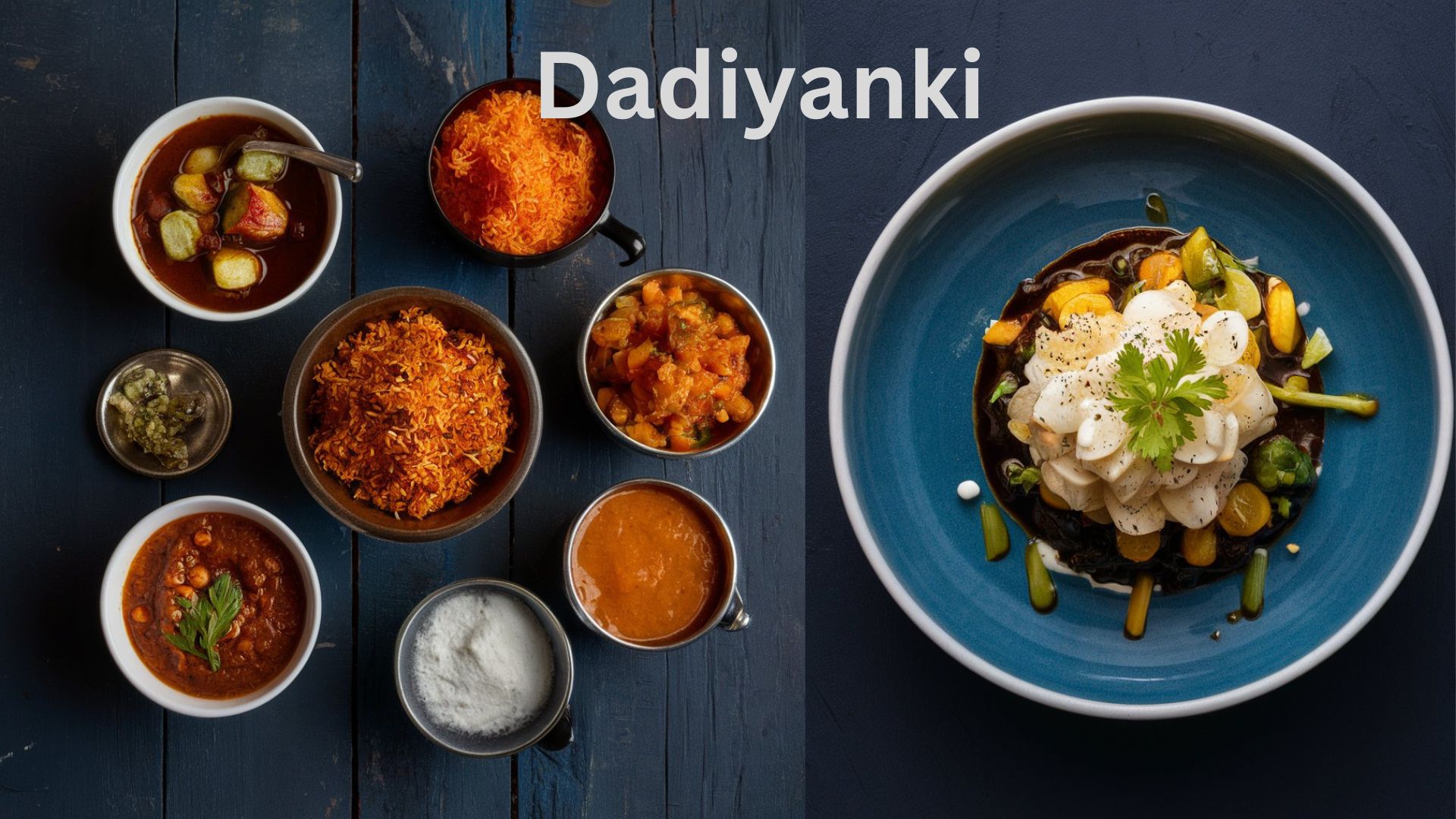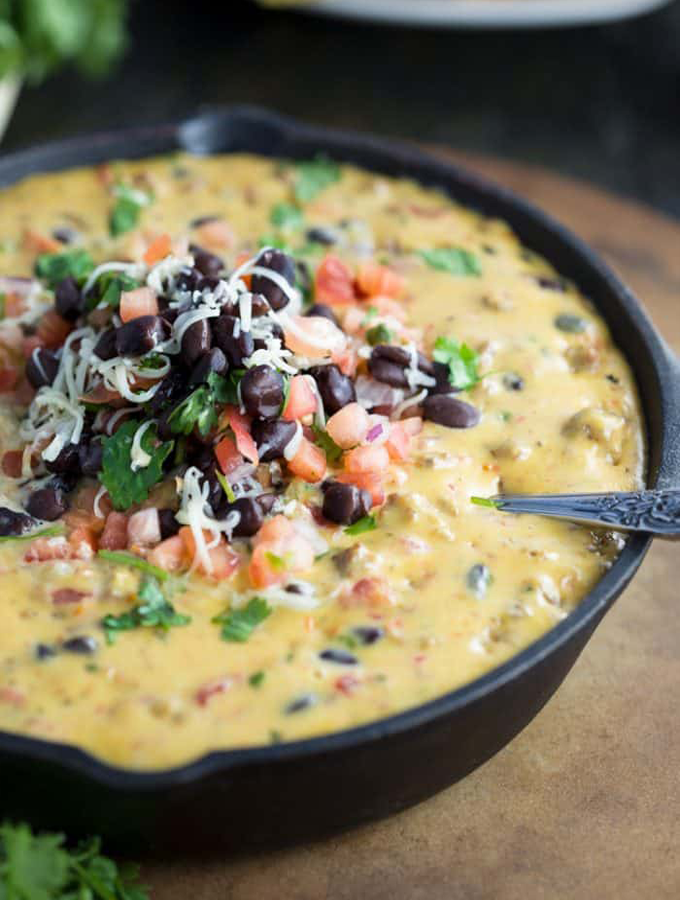Diet
Five Healthy Super Bowl Snacks that Brew Dees never thought of!

Introduction
Watching Drew Brees kiss his son, while mouthing the words ‘I love you’ might have been one of the most touching moments at this year’s Super Bowl Sunday after the New Orleans Saints beat the Indianapolis Colts to earn their first Super Bowl win. And yes, he was adjudged most valuable player for the 2009 NFL season, a title coveted by ever.
Apart from the fact that the Super Bowl is most-watched television broadcast, the amount of food consumed on Super Bowl Sunday is substantial and second only to the holiday of Thanksgiving.
And for almost everyone who takes a healthy interest in football, you know what that means… don’t you?
Plenty of snacks and beer and farts… that’s what!
Although, snacking when watching television has a bad reputation, there are a couple of things you can do, if healthy snacks aren’t available.
Tips to avoid snacks while watching television
What’s better than eating healthy snacks while watching television? Not eating snacks at all.
As absurd as that sounds, following the tips given below will help you to continue eating the snacks you want to eat, but without going overboard.
Tip #1: Eat a meal before watching TV
Tip #2: Don’t eat straight from the packet, but put a cautious amount in a serving plate or bowl.
Tip #3: Choose snacks that take a long time to chew.
Tip #4: Sip on water from a large bottle throughout the time while watching television.
Tip #5: Try and snack ONLY during commercial breaks.
Of course, if you don’t have the patience to follow these tips, then here are some options of healthy snacks that you munch on while doing so.
Healthier Snack Options
Not only will these healthy snack options prevent you from shoveling down mouthfuls of junk food but helps you watch your weight even in apparent moments of bodily and mental inactivity that the couch potato is addicted to from time to time.
Option 1: Popcorn
Air-popped popcorn which you can prepare very easily at home amounts to just 93 calories compared to the oiled bucket popcorn at your local movie theater.
Option 2: Pita chips with Hummus
One way to prepare this is to cut the pita at the edge into chip-sized pieces, after which you can microwave them until crispy, leaving you to pick your favorite dip to enjoy while watching television.
Option 3: Protein Bars
An excellent choice as protein is the nutrient that helps you build lean muscle mass as well as prevent the urge to eat more unlike junk food like potato chips or crackers.
Option 4: Pistachios
Full of antioxidants, fiber and good fats, this choice is not only a better choice than most junk food, but is also healthy for the heart. The only caveat being that you would have to work to open the shells, so it is advisable for you to open them before television time.
Option 5: Red Grapes
Perhaps the best choice of the aforementioned options, as it is full of antioxidants and vitamins, and is nature’s cure for those afflicted with the sweet tooth.
Conclusion
So you can say bye-bye to weight gain and beer farts if you try these options as you settle in for the night to watch any television program (apart from NFL programming) on the couch. Well, what do you know… thin is in!
Diet
Žižole: The Sweet and Medicinal Fruit of Tradition

Žižole, also known as jujube or Ziziphus jujuba, are small, reddish-brown fruits known for their sweet taste, chewy texture, and impressive health benefits. Native to Asia but widely appreciated across the Mediterranean and parts of the Balkans, žižole have been consumed for centuries both as a snack and a traditional remedy.
Whether eaten fresh, dried, or used in teas and syrups, žižole are making a modern comeback as a superfruit packed with nutrients and therapeutic value.
Botanical Background of Žižole
Origins and Growth
Žižole come from the Ziziphus jujuba tree, a deciduous shrub or small tree that thrives in warm, sunny climates. It belongs to the Rhamnaceae family and produces fruits that look like small dates or olives.
-
Scientific Name: Ziziphus jujuba
-
Common Names: Jujube, Chinese date, red date
-
Local Name (in Croatia/Slovenia): Ži.žole
These trees are hardy, drought-resistant, and can live for decades—making them ideal for home gardens or small orchards.
Fruit Appearance
Fresh žižo.le fruits are:
-
Oval or round in shape
-
Green when unripe, turning brown or reddish as they mature
-
Wrinkled and sweet when dried
The taste is similar to apples when fresh and to dates when dried.
Nutritional Value of Žižole
A Natural Source of Energy and Vitality
Žiž.ole are not just tasty—they’re nutritional powerhouses. Here are some key nutrients found in jujube fruits:
-
Vitamin C: Boosts immunity and skin health
-
Antioxidants: Helps fight free radicals and inflammation
-
Fiber: Supports digestion and gut health
-
Potassium: Regulates heart function and blood pressure
-
Amino acids: Promotes muscle repair and overall health
Just a handful of dried žižo.le can provide a quick and healthy energy boost, making them a smart snack choice for both kids and adults.
Health Benefits of Žižole
1. Strengthens the Immune System
Rich in vitamin C and antioxidants, žiž.ole support immune defense and help the body ward off infections. This is one reason they’re traditionally used in cold and flu remedies.
2. Improves Sleep and Reduces Anxiety
Žižo.le have been used in traditional Chinese medicine for centuries as a natural sedative. Compounds in the fruit are believed to help relax the nervous system and promote better sleep.
3. Supports Digestive Health
High in dietary fiber, žižole aid in healthy digestion, relieve constipation, and improve gut health. They’re gentle on the stomach and suitable for all ages.
4. Enhances Skin and Hair
The antioxidants in žiž.ole combat oxidative stress, which can slow down skin aging and improve hair vitality. Some natural beauty products now include jujube extract as a key ingredient.
Traditional and Modern Uses
Culinary Uses
Žižole can be enjoyed in many ways:
-
Fresh from the tree as a crunchy snack
-
Dried and eaten like dates or raisins
-
Boiled into herbal teas for a calming drink
-
Cooked into jams, syrups, or desserts
-
Used in liquors and infusions in Mediterranean households
In the Balkans, older generations often recall eating ži.žole as a childhood treat, collected from family gardens.
Medicinal Uses
Traditional remedies have used žižole for:
-
Treating insomnia
-
Soothing sore throats
-
Lowering stress
-
Supporting liver health
Today, jujube supplements and teas are sold in health stores around the world, often marketed for sleep, anxiety, and immunity support.
Growing Žižole at Home
Easy to Cultivate
For those with a sunny garden space, growing a žižole tree is both rewarding and simple:
-
Requires full sun and well-drained soil
-
Drought-tolerant once established
-
Can withstand moderate cold (depending on the variety)
-
Bears fruit within 2–3 years
With minimal maintenance, you can enjoy organic, homegrown žižole every year.
Cultural Significance of Žižole
In the Balkans and Mediterranean
Žižole hold nostalgic and cultural value in Croatian, Slovenian, and Italian coastal regions. They are often seen as a symbol of autumn, harvested around September and October. Families traditionally dry them for winter use or preserve them in honey.
In some areas, žižole are exchanged as gifts during seasonal festivals or placed on home altars as part of local customs.
Conclusion: Why Žižole Deserve a Spot in Your Diet
From traditional medicine cabinets to modern superfood lists, žižole continue to prove their worth. These humble, sweet fruits offer a unique blend of flavor, nutrition, and health benefits, all wrapped in a natural, bite-sized package.
Whether you’re looking for a natural sleep aid, a healthy snack, or a taste of cultural heritage, žižole are a smart and delicious choice.
Diet
Dadiyanki: A Journey Through Culinary Delights

Introduction to Dadiyanki
Welcome to a culinary journey like no other, where flavors dance on your taste buds and tradition comes alive in every bite. Step into the world of Dadiyanki cuisine, a hidden gem waiting to be discovered. From aromatic spices to hearty stews, get ready to tantalize your senses with dishes that have stood the test of time. Join us as we unravel the secrets and stories behind Dadiyanki’s rich culinary heritage.
The Origins of Dadiyanki Cuisine
Diving into the origins of Dadiyanki cuisine unveils a rich tapestry of culinary history and cultural influences. The roots of this vibrant cuisine can be traced back to ancient traditions passed down through generations.
Drawing inspiration from the region’s diverse landscapes and agricultural abundance, Dadiyanki dishes reflect a harmonious blend of flavors and textures. Local ingredients like fresh vegetables, aromatic spices, and fragrant herbs play a pivotal role in shaping the distinctive taste profile of these traditional recipes.
Historically, Dadiyanki cuisine has been shaped by trade routes that brought exotic ingredients and cooking techniques from distant lands. This fusion of flavors has contributed to the unique identity of Dadiyanki food, setting it apart from other regional cuisines.
Exploring the origins of Dadiyanki cuisine offers a glimpse into not just the evolution of food but also the cultural heritage and traditions that have shaped this culinary journey. Each dish tells a story steeped in tradition and innovation, reflecting the spirit and soul of this dynamic culinary landscape.
Popular Dishes and Ingredients
When it comes to Dadiyanki cuisine, there is a rich tapestry of popular dishes and unique ingredients that make this culinary tradition truly special. One of the most beloved dishes is “Dadiyanki Biryani,” a fragrant rice dish cooked with tender meat or vegetables and a blend of aromatic spices like cardamom, cloves, and cinnamon.
Another crowd favorite is “Dadiyanki Kebabs,” where succulent pieces of marinated meat are grilled to perfection, offering a smoky and flavorful experience. To complement these main courses, Dadiyanki also boasts an array of delectable side dishes such as “Dal Makhani” – creamy lentils simmered with butter and cream for a velvety texture.
The secret to the distinct taste of Dadiyanki cuisine lies in its use of fresh herbs like cilantro, mint, and curry leaves that add depth and complexity to every dish. In addition to traditional spices like cumin, turmeric, and coriander seeds which create layers of flavor that tantalize the taste buds.
Exploring the vibrant flavors and textures of Dadiyanki cuisine is not just about satisfying your hunger; it’s about immersing yourself in a cultural journey through food that celebrates heritage, community, and connection at every meal.
The Cultural Significance of Dadiyanki Food
Dadiyanki cuisine is not just about flavors and aromas; it holds a deep cultural significance that resonates through generations. The traditional dishes are more than mere sustenance; they are embodiments of heritage, memories, and shared experiences. Each recipe tells a story – of family gatherings, festive celebrations, and the warmth of home.
The food in Dadiyanki reflects the region’s history, blending influences from various cultures that have crossed paths over time. It’s a culinary mosaic that represents diversity and unity at the same time. From spicy curries to delicate desserts, every bite carries with it a piece of tradition and identity.
Cooking techniques passed down through families showcase a connection to ancestors who lovingly prepared these meals before us. The act of preparing and sharing Dadiyanki food is an expression of love, respect for elders, and a way to preserve customs for future generations.
How to Experience Dadiyanki Cuisine
Are you ready to embark on a culinary adventure through the flavors of Dadiyanki? To truly experience Dadiyanki cuisine, immerse yourself in the vibrant markets where locals source their fresh ingredients. Explore the bustling stalls filled with colorful spices, fragrant herbs, and exotic fruits unique to this region.
Indulge in authentic Dadiyanki dishes by dining at local eateries that specialize in traditional recipes passed down through generations. Be open to trying new flavors and textures that may surprise your taste buds and leave you craving more.
For a hands-on experience, consider taking a cooking class led by seasoned chefs who will guide you through the art of preparing classic Dadiyanki dishes. Learn about the intricate techniques and special ingredients that make these recipes so unique and flavorful.
Whether you’re savoring street food or dining at a renowned restaurant, each bite offers a glimpse into the rich culinary heritage of Dadiyanki. Enjoy every moment as you discover the diverse tastes and aromas that define this extraordinary cuisine.
Must-try Dishes and Restaurants in Dadiyanki
When visiting Dadiyanki, be sure to indulge in some of the must-try dishes that showcase the rich flavors and culinary heritage of this region. One such dish is the flavorful Dum Aloo, where potatoes are cooked in a spicy gravy with aromatic spices like cardamom and cloves.
Another favorite among locals and visitors alike is the delectable Mutton Rogan Josh, a slow-cooked lamb curry infused with Kashmiri red chili powder for a bold flavor profile. For those craving something lighter, don’t miss out on trying Baingan Bharta, a smoky eggplant dish simmered with tomatoes, onions, and fragrant cumin.
In terms of restaurants, make sure to stop by “Spice Delight” for an authentic taste of Dadiyanki cuisine or head over to “Flavors of Dadiyanki” for a modern twist on traditional dishes. Whether you’re a food enthusiast or just looking to explore new flavors, Dadiyanki has something to offer for every palate.
Culinary Heritage: Exploring Dadiyanki’s Roots
Embarking on a culinary journey through Dadiyanki is like unraveling the rich tapestry of its gastronomic heritage. The roots of Dadiyanki cuisine run deep, intertwined with centuries-old traditions and flavors passed down through generations.
The fusion of aromatic spices, fresh produce, and time-honored cooking techniques creates a unique culinary experience that reflects the region’s cultural diversity and history. Each dish tells a story, connecting the present to the past in a harmonious blend of taste and tradition.
Exploring Dadiyanki’s culinary heritage offers a glimpse into the soul of this vibrant culture. From festive feasts to everyday meals, every bite carries with it the essence of community, celebration, and love for good food shared among family and friends.
By delving into Dadiyanki’s roots, we not only savor delicious dishes but also pay homage to those who have preserved these recipes over time. It is a journey that nourishes both body and soul while honoring the legacy of those who came before us.
Family Recipes: Treasured Secrets Passed Down Through Generations
In Dadiyanki, culinary traditions are not just about the food itself but also the stories and memories woven into each dish. Family recipes hold a special place in every household, passed down through generations like heirlooms of flavor.
These treasured recipes carry with them the essence of familial love and connection, creating a bond that transcends time. From aromatic spices to unique cooking techniques, each recipe is a testament to the rich heritage of Dadiyanki cuisine.
As grandparents share their culinary wisdom with younger family members, they ensure that these cherished recipes will continue to be enjoyed for years to come. The act of preparing a traditional dish together becomes more than just cooking – it’s a way to honor and preserve cultural roots.
Through these family recipes, future generations can taste not only the flavors of Dadiyanki but also experience the warmth and nostalgia that comes from keeping tradition alive in the kitchen.
Cooking Techniques: Mastering the Art of Dadiyanki Cuisine
Embarking on a culinary journey through Dadiyanki cuisine unveils a rich tapestry of cooking techniques that have been honed over generations. Mastering the art of Dadiyanki cuisine requires patience, precision, and a deep appreciation for tradition.
One fundamental technique in Dadiyanki cooking is slow cooking over low heat to allow flavors to meld together harmoniously. This method results in dishes bursting with complexity and depth.
Another hallmark of Dadiyanki cuisine is the meticulous selection and preparation of ingredients. From hand-ground spices to freshly harvested produce, every component plays a crucial role in creating authentic flavors.
Dadiyanki chefs are known for their skillful manipulation of spices and seasonings, balancing heat with sweetness, and acidity with richness. The result? A symphony of tastes that dance on the palate.
To truly master the art of Dadiyanki cuisine, one must not only follow recipes but also embrace the intuitive nature of cooking passed down through familial traditions. It’s about more than just following instructions – it’s about embodying the spirit of culinary heritage with each dish prepared.
Ingredients Spotlight: Fresh and Flavorful StaplesHealth Benefits: Nutritional Insights of Dadiyanki Dishes
Ingredients Spotlight: Fresh and Flavorful Staples
In Dadiyanki cuisine, fresh and flavorful ingredients take center stage. From aromatic spices to locally sourced vegetables, each dish is a harmonious blend of textures and tastes that delight the palate.
Health Benefits: Nutritional Insights
The use of fresh produce not only enhances the taste but also packs a nutritional punch. Rich in vitamins, minerals, and antioxidants, Dadiyanki dishes offer a wholesome dining experience that nourishes both body and soul.
Exploring traditional cooking techniques further amplifies the health benefits of these dishes. By using minimal oil and emphasizing natural flavors, Dadiyanki cuisine provides a balanced approach to eating that promotes overall well-being.
Whether it’s the vibrant hues of turmeric or the earthy notes of cumin seeds, every ingredient in Dadiyanki cuisine serves a purpose beyond just flavor – it contributes to a holistic approach towards wellness through food.
Conclusion
As we wrap up our culinary journey through Dadiyanki. It’s evident that this unique cuisine holds a treasure trove of flavors and traditions waiting to be discovered. From the rich history of its origins to the vibrant array of dishes and ingredients, offers a culinary experience like no other.
Exploring the cultural significance of this food reveals a deep connection to heritage and community. Where each dish tells a story passed down through generations. Whether you’re savoring traditional family recipes or sampling delicacies at local restaurants, every bite in Dadiyanki is infused with love and tradition.
From mastering cooking techniques to spotlighting fresh ingredients, there’s always something new to learn about Dadiyanki cuisine. And let’s not forget about the health benefits – these flavorful dishes are not just delicious but also packed with nutritional goodness.
So next time you find yourself craving an adventure for your taste buds, consider embarking on a culinary exploration of Dadiyanki. Who knows what delightful surprises await in this hidden gem of gastronomy?
FAQs
Q: What makes Dadiyanki cuisine unique?
A: Dadiyanki cuisine is a culinary treasure trove that reflects the rich heritage and diverse influences of the region. The unique blend of flavors, fresh ingredients, and traditional cooking techniques sets it apart from other cuisines.
Q: Are there any vegetarian options in Dadiyanki cuisine?
A: Yes, Dadiyanki cuisine offers a wide variety of delicious vegetarian dishes made with fresh vegetables, lentils, and aromatic spices. Vegetarian options are plentiful and equally flavorful in this vibrant culinary tradition.
Q: How can I experience authentic Dadiyanki cuisine?
A: To truly savor the flavors of Dadiyanki cuisine, visit local restaurants or attend cultural festivals. Where you can indulge in authentic dishes prepared by talented chefs. You can also try your hand at cooking traditional recipes at home using fresh ingredients and following time-honored methods.
As you embark on a journey through the culinary delights of this, immerse yourself in the vibrant flavors. The rich history and cultural significance make this cuisine truly special. Whether you’re exploring family recipes passed down through generations or sampling must-try dishes at local eateries. Each bite tells a story of tradition and innovation. Discover the magic of Dadiyanki cuisine for yourself. An experience that will tantalize your taste buds and leave you craving more.
Diet
Cowboy Queso Chronicles: A Taste of the Wild West

Saddle up, amigos! Get ready to embark on a flavorful journey through the rugged terrain of the Wild West with a dish that’s as bold and adventurous as the cowboys who roamed the plains. Cowboy Queso, a beloved Tex-Mex creation, is more than just a dip – it’s a culinary ode to the spirit of the frontier. Join us as we dive into the rich history, tantalizing recipes, and mouthwatering variations of this iconic dish that will have you craving for more. So grab your cowboy hat and lasso because we’re about to rustle up some serious flavor with Cowboy Queso Chronicles!
The History of Queso in the Wild West
Long before queso became a beloved Tex-Mex staple, its roots in the Wild West traced back to a time when cowboys roamed the open plains. Picture rugged cattle drives and campfire cookouts under the starry night sky – that’s where cowboy queso found its humble beginnings.
In those early days, simple ingredients like cheese, chilies, and tomatoes were combined over an open flame to create a hearty and satisfying dish for weary trail riders. The flavors of the Wild West mingled with Mexican influences to give birth to what we now know as cowboy queso.
As settlers moved westward, so did this tasty concoction. Cowboys would gather around their campfires after long days on horseback, sharing stories and passing around a steaming pot of cheesy goodness. It was more than just food; it was a symbol of camaraderie and shared experiences in an unforgiving landscape.
Today, cowboy queso has evolved into a versatile dish that can be found in restaurants and homes across the country. Its rich history reflects the spirit of adventure and resilience that defined life in the Wild West.
Traditional vs Modern Cowboy Queso Recipes
When it comes to Cowboy Queso, the clash between traditional and modern recipes is a culinary showdown of epic proportions. Traditional cowboy queso often consists of basic ingredients like cheddar cheese, tomatoes, onions, and jalapeños cooked over an open flame. These simple yet flavorful components capture the essence of the Wild West’s rugged charm.
In contrast, modern cowboy queso recipes have taken this classic dish to new heights by incorporating gourmet cheeses, exotic spices, and unconventional add-ins like bacon or avocado. The result? A bold fusion of flavors that pushes the boundaries while still paying homage to its roots.
Whether you prefer sticking to tradition or embracing innovation, one thing is certain – Cowboy Queso will always hold a special place in Western cuisine as a versatile and irresistible appetizer that brings people together around the campfire or at home.
Unique Ingredients and Variations of Cowboy Queso
When it comes to Cowboy Queso, the possibilities are as vast as the Wild West itself. Traditional recipes call for a blend of cheddar and pepper jack cheeses, but modern twists have introduced ingredients like cream cheese, salsa verde, or even ground beef for an extra kick.
Some variations feature the addition of smoky bacon or spicy chorizo to elevate the flavor profile. Others opt for a touch of sweetness with caramelized onions or roasted red peppers. The beauty of Cowboy Queso lies in its adaptability – you can truly make it your own by experimenting with different combinations of ingredients.
For those looking to add a Tex-Mex flair, tossing in some diced jalapeños or green chilies can bring a welcomed heat to the dish. And let’s not forget about topping options; from fresh avocado chunks to crispy fried onions, there’s no shortage of ways to customize your queso creation.
Step-by-Step Guide: How to Make Cowboy Queso at Home
Are you ready to bring a taste of the Wild West into your kitchen? Making Cowboy Queso at home is easier than you think. Let’s dive into the step-by-step guide to create this delicious, cheesy dip that will have your guests asking for more.
Start by gathering all the ingredients: ground beef, bell peppers, onions, jalapeños, spices like chili powder and cumin, Velveeta cheese, and a can of diced tomatoes with green chilies.
In a skillet, brown the ground beef with diced onions and peppers until cooked through. Add in the spices for that authentic Tex-Mex flavor profile.
Next, melt the Velveeta cheese in a saucepan over low heat. Once melted, stir in the cooked meat mixture and diced tomatoes with green chilies.
Mix everything well until combined and creamy. Serve hot with tortilla chips or sliced veggies for dipping. Enjoy your homemade Cowboy Queso straight from the frontier of flavor!
Pairing Suggestions and Serving Ideas for Cowboy Queso
Looking to elevate your cowboy queso game? Pair this hearty and flavorful dip with an array of delicious accompaniments for a true Wild West experience.
For a classic twist, serve your cowboy queso with crispy tortilla chips or warm, soft pretzels. The salty crunch perfectly complements the creamy richness of the queso.
Want to add some freshness to your spread? Try pairing cowboy queso with sliced veggies like bell peppers, carrots, and celery. The crispness of the veggies provides a nice contrast to the indulgent cheese dip.
Feeling adventurous? How about serving it alongside jalapeño poppers or spicy buffalo wings for an extra kick of flavor?
Don’t forget about beverages! A cold beer or a refreshing margarita can be the perfect complement to the bold flavors of cowboy queso.
Get creative with your pairings and have fun experimenting with different combinations to find what suits your taste buds best.
Conclusion: Embracing the Flavors of the Wild West with Cowboy Queso
Savoring the rich, bold flavors of it is like taking a culinary journey through the rugged landscapes of the Wild West. Each velvety bite tells a story of tradition and innovation, blending spicy peppers with creamy cheese in a harmonious dance of taste.
From cattle ranches to modern kitchens, the legacy of Cowboy Queso lives on as a symbol of frontier spirit and gastronomic creativity. It’s more than just a dish; it’s a cultural experience that brings people together around the table to share laughter, stories, and unforgettable flavors.
Whether you prefer it hot and fiery or mild and comforting, there’s no denying the allure of this Tex-Mex favorite. As you dip your tortilla chip into that bubbling pot of cheesy goodness, you’re not just eating food – you’re experiencing history in every mouthful.
So next time you crave a taste adventure, saddle up your taste buds for a wild ride with it. Let its spicy charm transport you to an era where cowboys roamed free and flavors knew no bounds.
FAQs
Q: Can I make Cowboy Queso vegetarian-friendly?
A: Absolutely! You can easily swap out ground beef for plant-based alternatives like crumbled tofu or textured vegetable protein.
Q: How long does Cowboy Queso last in the fridge?
A: If stored properly in an airtight container, it can last for up to 4-5 days in the refrigerator. Just reheat it gently on the stovetop or microwave before serving.
Q: Are there any gluten-free options for making Cowboy Queso?
A: Yes, you can use cornstarch instead of flour as a thickening agent to make your Cowboy Queso gluten-free while still achieving that creamy consistency.
Embracing the Flavors of the Wild West it brings together history, tradition, and modern twists into one delicious dish. From its roots in cowboy campfires to kitchens around the world today, this flavorful dip has become a staple at gatherings and parties. Whether you stick to tradition or get creative with unique ingredients, making your own batch of it is sure to impress your taste buds and guests alike. So grab your chips, dig in, and savor every bite of this iconic Wild West creation!
-

 Entertainment1 year ago
Entertainment1 year agoYoungTube 101: Tapping the Youthful Side of Online Video
-

 Pet2 years ago
Pet2 years agoDog Training Tips: Throw me a bone, will you?
-

 Entertainment2 years ago
Entertainment2 years ago4 Reasons Why She Doesn’t Call You Back
-

 Fitness1 year ago
Fitness1 year agoThe Allure of Sports T-Shirts: A Blend of Style and Team Spirit:
-

 Fitness2 years ago
Fitness2 years agoTotal Mind and Body Fitness Blog Carnival 165
-

 Fitness2 years ago
Fitness2 years agoTotal Mind and Body Fitness Blog Carnival 141
-

 Health2 years ago
Health2 years agoWhat Is Healthy?
-

 Pet2 years ago
Pet2 years agoPet Supplies Plus: A Complete Guide to Pet Health
